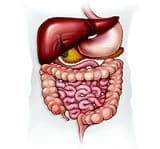(NewsUSA) – Peripheral artery disease (PAD) is an underhanded disease with a real knack for stealth.
“PAD can be very tricky. If patients experience symptoms at all, they frequently mistake them for something else. Scarily enough, even healthcare professionals sometimes have trouble diagnosing PAD,” says Dr. Emile Mohler, director of vascular medicine for University of Pennsylvania Health System, and spokesperson for the Vascular Disease Foundation. (VDF).
VDF has taken on the heavy burden of educating the public about largely unknown vascular conditions, such as PAD. The lack of general awareness only adds to the mystery of the oft symptom-free disease.
As the arteries in the lower limbs narrow or harden with plaque — known as atherosclerosis — there are very few symptoms warning adults that their lower limbs are starved for blood flow.
The most common symptoms of the circulatory problem are cramping, pain or weakness in the legs or hip muscles while walking or exercising. While many attribute the pain to arthritis or old age and ignore it, PAD continues to deprive your legs and feet of oxygen. Now talk about sneaky.
If PAD goes undiagnosed, skin ulcers and gangrene can form that may require amputation. Furthermore, people with PAD have four to five times more risk of heart attack and stroke.
But, the news about PAD isn’t all bad. If patients take the necessary treatment steps, which are relatively simple, further progression is prevented, and some symptoms are reversed.
First and foremost, doctors usually prescribe a high dose of lifestyle changes focusing on — you guessed it — a better diet and more exercise. Physical activity will help increase blood flow like no other remedy, plus it helps lower cholesterol and blood pressure. However, some medications will likely be recommended.
Are you at greater risk of developing PAD? Read on to find out:
* If you smoke, you have an especially high risk for PAD.
* If you have diabetes, you have an especially high risk for PAD.
* If you have high blood pressure or high cholesterol, you are at risk for PAD.
* If you’re above the age of 50 and your family has a history of atherosclerosis or coronary artery disease, you’re at risk for PAD.
Have more questions? Visit www.vasculardisease.org to find the answers.









 The Healing Place LLC helps all ages to find relief from chronic pain, chronic digestive problems and balance hormones naturally. We practice COVID19 safety. Don’t forget to check on our online school HealingPlaceEnergySchool.com. Thank you.
The Healing Place LLC helps all ages to find relief from chronic pain, chronic digestive problems and balance hormones naturally. We practice COVID19 safety. Don’t forget to check on our online school HealingPlaceEnergySchool.com. Thank you.
Recent Comments